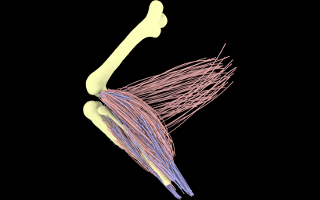Research interests
Structure and function on micro- and macroscopic levels for cells/tissues/species related to metabolism, locomotion and immune system.

Systems biology is a part of the life sciences that attempts to understand biological organisms in their completeness. The aim is to obtain a complete picture across all scales (nano-, micro- and macroscopic), from the genome to the proteome to the organelles to the behaviour and biomechanics. One of the main methods used for this is systems theory and its subfields. However, this mathematical-analytical approach of systems biology does not always lead to success, so other research methods, such as computer simulation and heuristics, are also used.
Research topics
- Metabolism
- Protein stability
- Hematocrit
- Connective tissue
- Musculature
- Locomotion
Research methods
- Reconstruction
- Analytical-Models
- Multibody-Models
- FE-Models
- Simulations
Cells Specialized for Secretion of Extracellular Matrix
- cells that synthesize the extracellular matrix and collagens
- cartilage cells
- bone cells
Contractile Cells
- skeletal muscle cells
- heart muscle cells
- smooth muscle cells (various)
- myoepithelial cells
Cells of Blood and Immune System
- red blood cell
- megakaryocyte
- macrophages and related cells
- neutrophil
- eosinophil
- basophil
- mast cell
- T lymphocyte
- B lymphocyte
- killer cell
- stem cells and committed progenitors for the blood and immune system (various)
Based on the classification of:
Molecular Biology of the Cell
Edition: 6th
Author(s): Bruce Alberts, Alexander Johnson, Julian Lewis, David Morgan, Martin Raff, Keith Roberts, Peter Walter
ISBN: 9780815344322